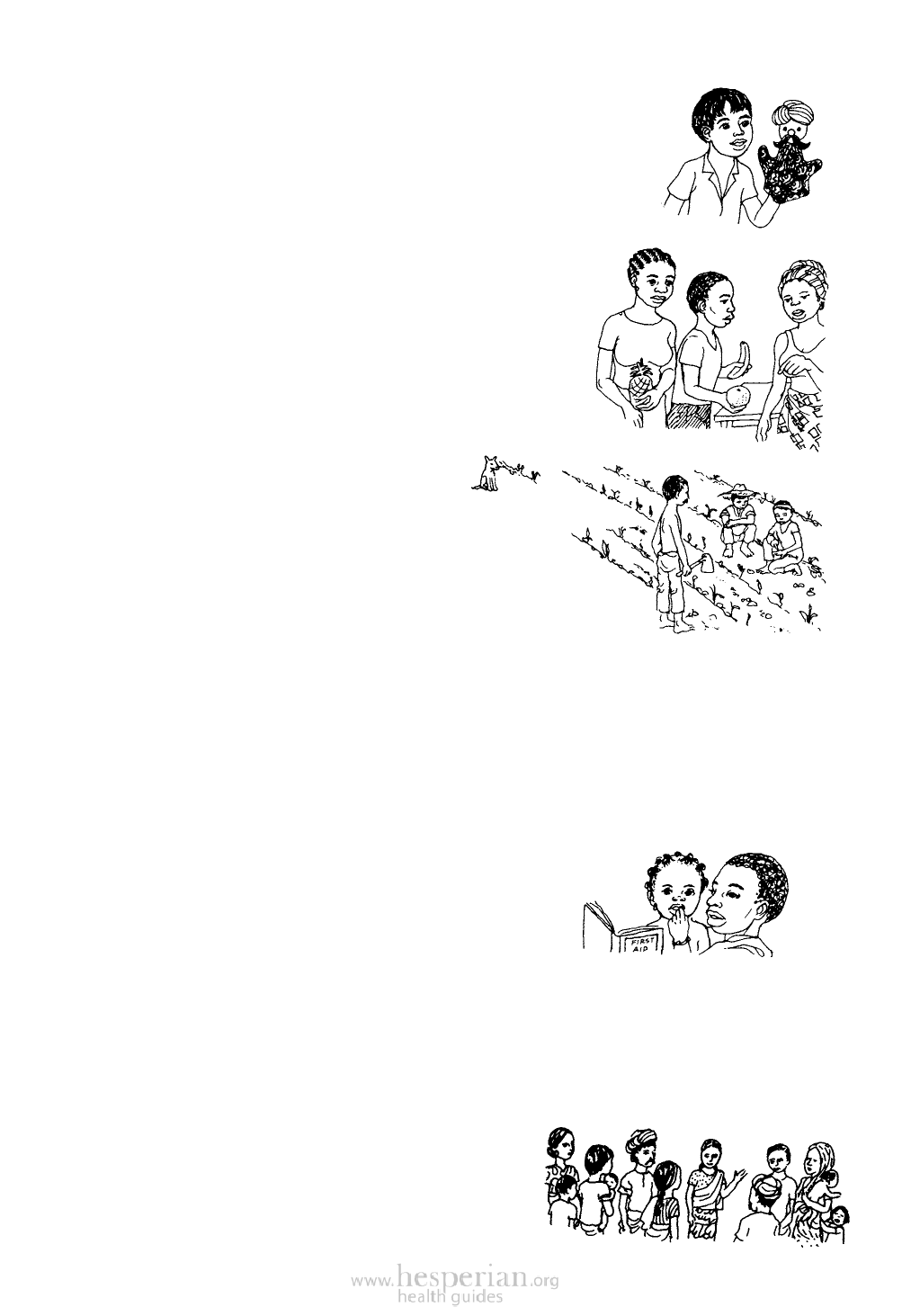
25-37
6. Puppet shows are especially fun and useful for children’s
groups. It is best if the children make puppets and conduct the
show themselves.
Examples:
• Oral rehydration: Story of Pepito, p. 24-28
• How to take care of your Teeth, p. 27-37
7. Small-group discussions and learning
sessions with mothers, fathers, young people, etc.
It is best if the talk about different foods is brought
to life by having everyone bring real foods, rather
than using flannel ones. (That way you will be sure
to teach about foods that are available locally.) Use
a dialogue approach and appropriate
teaching aids (see Chapter 11).
8. Garden and agricultural projects.
Actual practice is the best way to learn
about these.
Examples:
• Family or school gardens
• Better grain storage: making storage bins, pages 11-1
and 25-27
• Other possibilities for improved food production (see Hesperian’s
A Community Guide to Environmental Health)
9. Slides, videos, DVDs. It is a good idea to use methods health workers
can later use for teaching in their villages. This means solar or battery-operated
projectors with portable computers, unless health workers will have access to
projectors and electricity in their communities. Many groups distribute resources
on nutrition and other topics. (See Back-3; also WTND, p. 429.)
10. CHILD-to-child activities help children
to understand and meet the health needs of their
younger sisters and brothers. Try to have children
teach other children.
Examples related to nutrition:
• Learning about diarrhea: children discover through their own survey the
importance of breast feeding, oral rehydration, and giving food to children
with diarrhea, p. 24-17
• Measuring to find which children are too thin: children make arm bands and
measure younger children, p. 25-14
11. Community practice and experience.
As much as possible, health workers should have
a chance during their training to practice all these
different activities and teaching methods with
people in a real village or community.